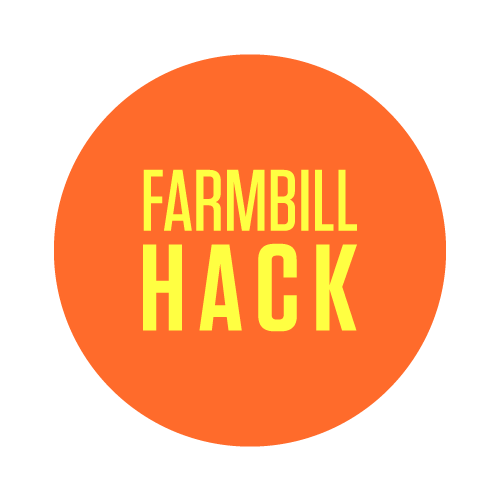There is a lot of talk about the Farm Bill these days in part because it was due to be revisited over the course of 2012, and then because cuts from it were entangled in the the Super Committee mess (which now officially failed).
Yet we also hear about the Farm Bill because, we are told, it affects what Americans eat more than any other piece of legislation. But how exactly? What is in it and why should Americans care?
Thus far, there is little in the way of visually interesting and informative media about the Farm Bill. Which is why we are co-hosting the Farm Bill Hackathon on December 3, 2011 with Gojee.
How it Will Work
Over the course of 12 hours, participants will work together to produce tools or graphics that news media and organizations can use to convey the complexities and relevance of the Farm Bill to the public.
Organizations, journalists and individuals will list their project ideas or problems on the Farm Bill Hackathon Wiki, including supporting materials and relevant data sets. Designers, data visualists, developers, statisticians, marketers and anyone else interested will visit sign up to work on one of the ideas. Groups are free to brainstorm before the event over email or through the medium of their choice. On December 3, everyone will come together, both in person and virtually, to turn those ideas and problems into tools, visualizations, or products.
Below is an example of a problem posted by one of our sponsors, the Glynwood Institute for Sustainable Food and Farming.
Idea: Visualization of government money going toward new farmers
We Are: The Glynwood Institute for Sustainable Food and Farming
The Problem: The government’s Startup America Program http://www.sba.gov/startupamericais investing 2 billion dollars into “promising high-growth” businesses.
- How much is going toward new farmers? According to the Young Farmers Coalition’s report “Building a Future with Farmers”
While the USDA acknowledges the need for hundreds of thousands of new and beginning farmers in the United States, current federal and state agricultural policies are not doing nearly enough to provide support and opportunity to this critical group. Indeed, in many cases, conflicting policies erect barriers for young people striving to build their own farm businesses. Farming is a vital and in-demand career, and is essential to our nation’s health, traditions and security. With almost one-quarter of all farmers expected to retire in the next twenty years, greater focus, creativity and resources are required to keep America farming. Government, from local towns to Congress, must play a part. Through policy, programs and zoning, government can be instrumental in bringing young people back to the farm.
The Solution: A visualization comparing where startup money is being invested, including how much (or how little) is going to new farmers.
Resources: Data on how much money is being invested in new businesses and how much is going to new farmers.
http://www.nifa.usda.gov/fo/beginningfarmerandrancher.cfm
http://www.beginningfarmers.org/funding-resources/
http://www.fsa.usda.gov/Internet/FSA_File/beginloans.pdf
We are looking for: Someone who can put this visualization together.
How can you be involved?
If you are an organization, or someone who knows the bill and why it should be important to the public, please list your idea and its corresponding data on the Farm Bill Hackathon Wiki,under “Project Ideas.”
If you would like to attend the Hackathon in NYC, please register here for the free event.
If you would like to participate virtually, please visit the wiki and email beth[at]foodtechconnect.com to let us know of your involvement.
Information from last year’s is available in this round-up and in last year’s wiki



